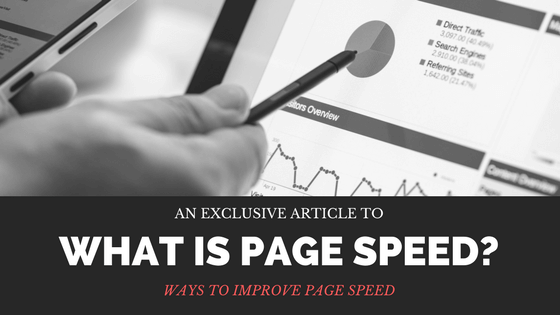What Is Page Speed?
What is page speed?
Most of the people get confused with page speed and site speed, please be clear that page speed and site speed are two different terms. Page speed can also be known as page load time or you can say time to load first byte. Time to First byte is how long your browser takes to receive the first bite from server.
Faster page can help you both rank and conversion rate wise.
Best SEO Practice
Page speed was initially contributed a very large proportion in determining the page rank which was further measured by measuring time to first byte. A slower page speed simply means that it can just crawl fewer pages using their crawl budget which could eventually affect your performance.
If we talk about user experience page speed does matter a lot as pages with heavy load or with a longer loading time tend to percieve lower average time and higher bounce rate. So in totality it affects your conversion rate.
Here are few ways to improve website page speed :
Minify codes used for website development
Code optimization can be done by removing unessecary commented codes, extra spaces, and characters. Re-formatting and removal of unused code certainly increase your page speed. Make sure you follow the required code structure to make it more easily readable to the google and other bots. Optimizing CSS and JS files plays an important role in page speed, make sure to check and remove unused and third party (with a long load time) JS files if you have any.
Enable Cache
Cache used to save your CSS, JS, Images and more so to give a speedy experience to your already owned users. You may simply say that you need not to load the whole page again and again for the same user. You can set an expiration for your cache which will be triggered on page expiration, this means the whole page is going to load next time you open the website.
Optimize Images
Images should be in correct format and size, too high resolution or large size images will certainly lead to lower your page speed. You should be aware that logos and icons mostly be as PNGs where photographs are as JPEGs. JPEGs should also be optimized as progressive for the websites and to be save for web. Many people use CSS sprites to create images, like icons. CSS sprites are the combined image file of all your images into a single image file which can later be used to display the sections which are required at certain places. This is a good technique for optimizing your image.
URL Redirect Effects
Less redirects make your visitor to wait for less time to page load because each time you redirects a page, website user faces additional waiting time for the request to complete. Like; https://example.com -> https://www.example.com. But this is certainly important so try to limit the usage of redirects. These small tweaks you should try on your website



